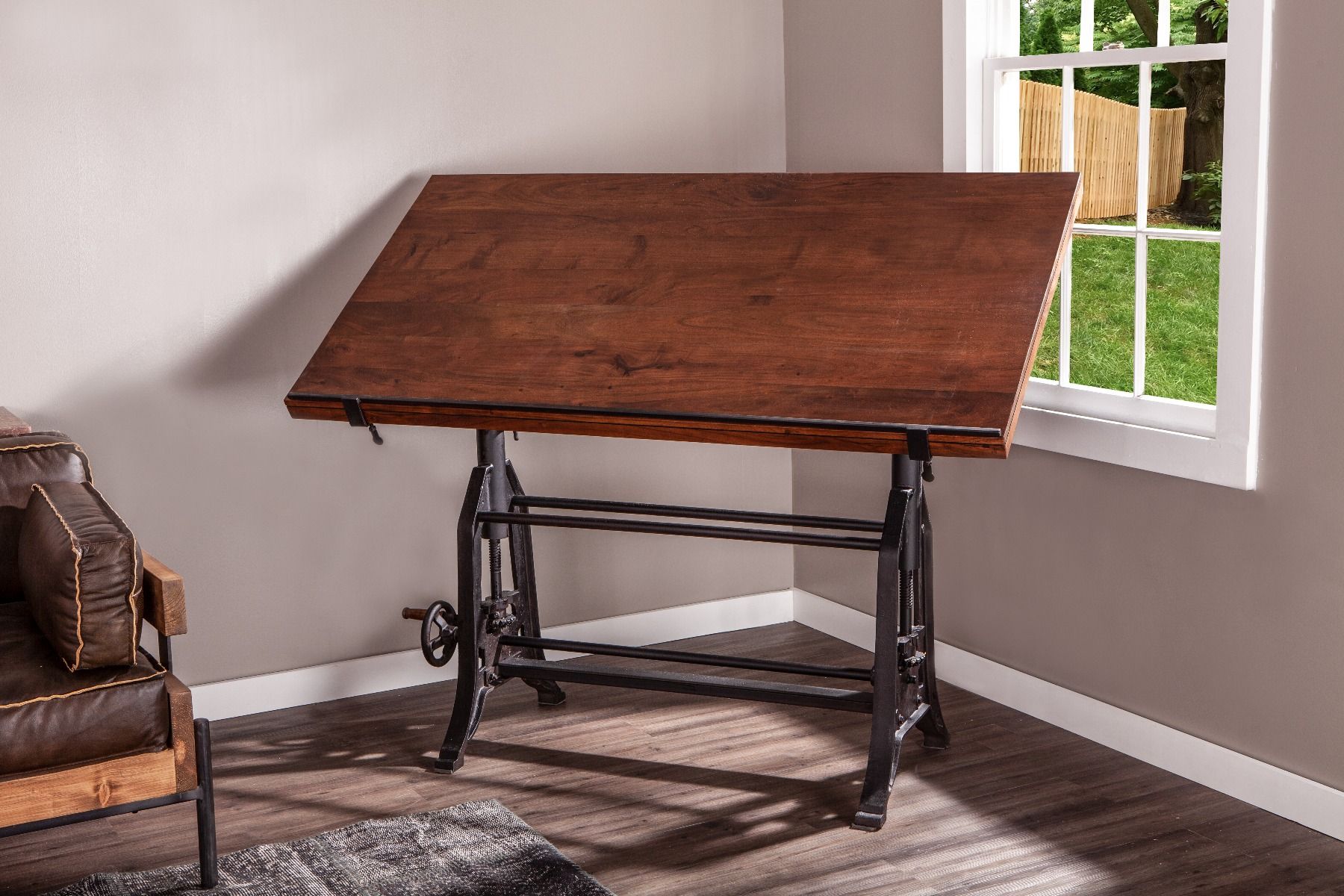A drafting table is more than just a piece of furniture; it’s an essential tool for architects, engineers, artists, and other creative professionals. The perfect drafting table not only makes your work more comfortable and efficient but also serves as an inspiring centerpiece in your workspace. With numerous options available, how do you find the one that’s just right for you?
This comprehensive guide will walk you through the factors to consider when choosing a drafting table, explore top-rated options in various categories, and offer tips on caring for your drafting table to ensure its longevity. So, let’s get started!
Key Takeaways
- Find the perfect drafting table for your workspace by considering size, functionality and aesthetics.
- Invest in quality lighting solutions, storage options and tools to create an efficient workspace.
- Regularly clean and maintain your drafting table to ensure its longevity.
Choosing the Right Drafting Table for Your Workspace
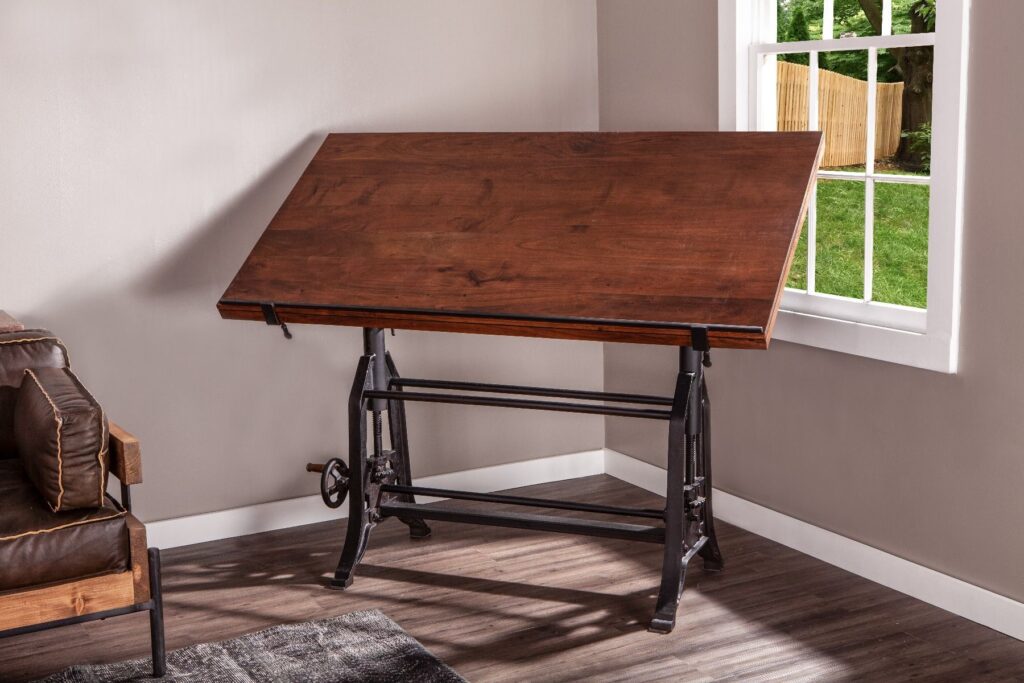
When selecting the perfect drafting table, you’ll want to consider its size, functionality, and aesthetics to make sure it blends well with your workspace and meets your needs. A drafting table should have the following characteristics:
- It should be large enough to accommodate your projects, but not so big that it overcrowds your work area.
- It should offer adjustable features to suit your working preferences.
- It should have a design that complements your personal style and workspace.
In the following subsections, we’ll delve deeper into these factors, guiding you through size and space requirements, functionality and features, and style and aesthetics to help you make an informed decision.
Before diving into the specifics, it’s essential to understand the purpose of drafting tables, also known as drawing tables. These specialized tables are designed for hand-drafting plans and drawing blueprints, with adjustable height and angle options for ergonomic comfort. Given the vast variety of drafting tables available, finding one that satisfies your unique needs and preferences becomes fundamental.
Size and Space Requirements
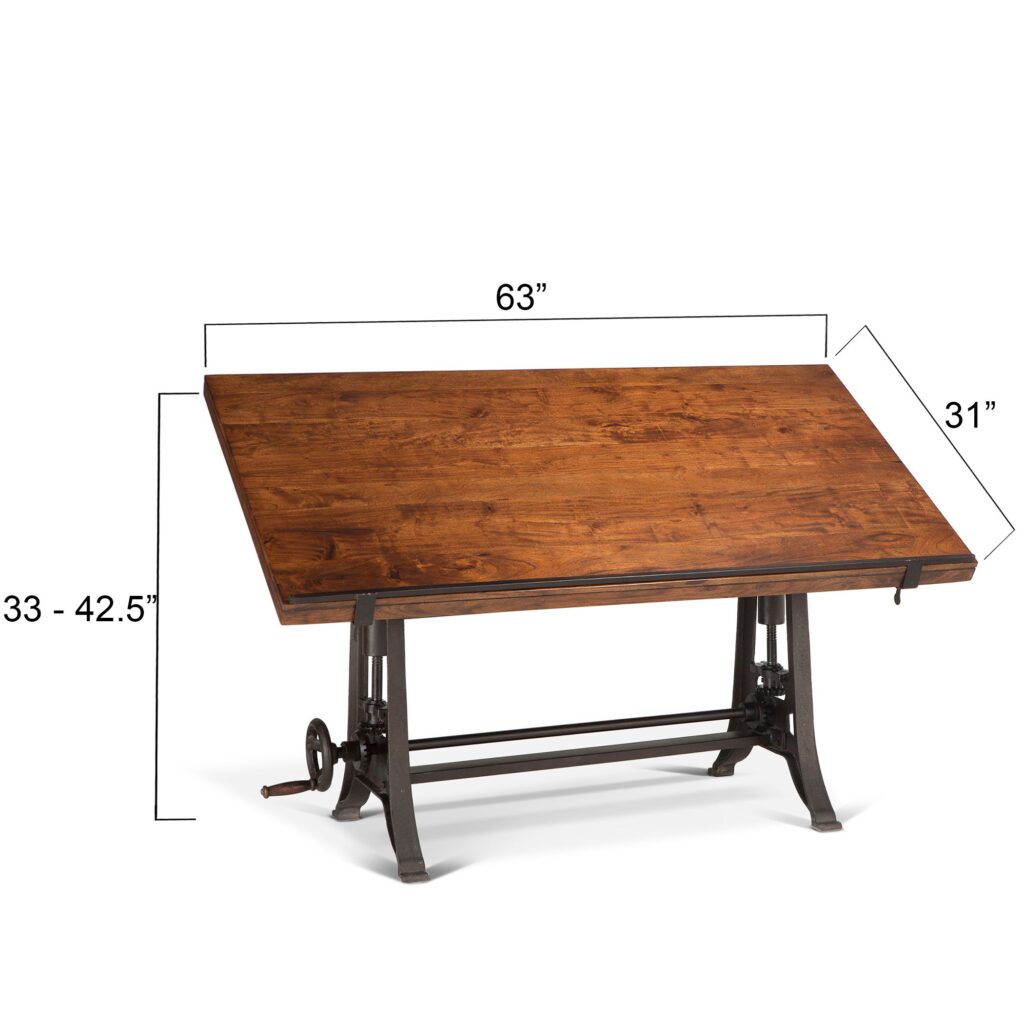
Size and space requirements are pivotal factors in the process of choosing a drafting table. Evaluating the available space in your work area ensures that the table fits comfortably without overcrowding. Drafting tables come in various sizes, with typical dimensions including a height of 81 cm, width of 120 cm, and depth of 80 cm, along with adjustable inclinations. However, it’s essential to allocate sufficient space around the table for movement, as well as to accommodate any accessories or supplies used during the drafting process.
To measure the space for a drafting table in your room, follow these steps:
- Measure the width and length of the area where the table will be placed.
- Assess the room’s height to ensure the table fits comfortably without obstructing any fixtures or furniture.
- Consider any adjacent walls or areas that may influence the table’s placement.
- Determine the size of the drafting table needed based on your work requirements and available space, ensuring there’s enough room around the table for easy movement and access to supplies.
Functionality and Features
Drafting tables offer a plethora of functionalities and features designed to meet specific needs. Adjustable surfaces, for instance, provide flexibility in finding the most suitable setting for your work, allowing the table to be used for various tasks, such as drawing, writing, and crafting on a flat surface. One such option is the planmaster drafting table, which offers added storage options, like a pencil ledge or a sliding keyboard shelf, for enhanced organization and convenience.
In the process of choosing a drafting table, considering the features that align best with your necessities is important. For instance, the Industrial Loft Drafting Desk offers a wide adjustable surface, a reclaimed iorn frame, and adjustable height. By evaluating the features and functionality of various drafting tables, you can find the perfect fit for your individual needs and preferences.
Style and Aesthetics
Beyond size and functionality, the style and aesthetics of a drafting table also bear significant weight. A drafting table should not only serve its purpose but also complement your workspace’s design and reflect your personal style. Various styles of drafting tables are available, including traditional, contemporary, vintage, and adjustable models. Drafting table designs suitable for modern workspaces may feature adjustable height, sleek designs, or a combination of metal and wood materials for a modern-industrial aesthetic.
The style of a drafting table can also impact its functionality, as different styles offer varying features and designs that can influence your comfort and efficiency while working. Ultimately, the style and aesthetics of a drafting table contribute to the atmosphere and motivation in your workspace, directly affecting your productivity and creativity.
Top Drafting Tables
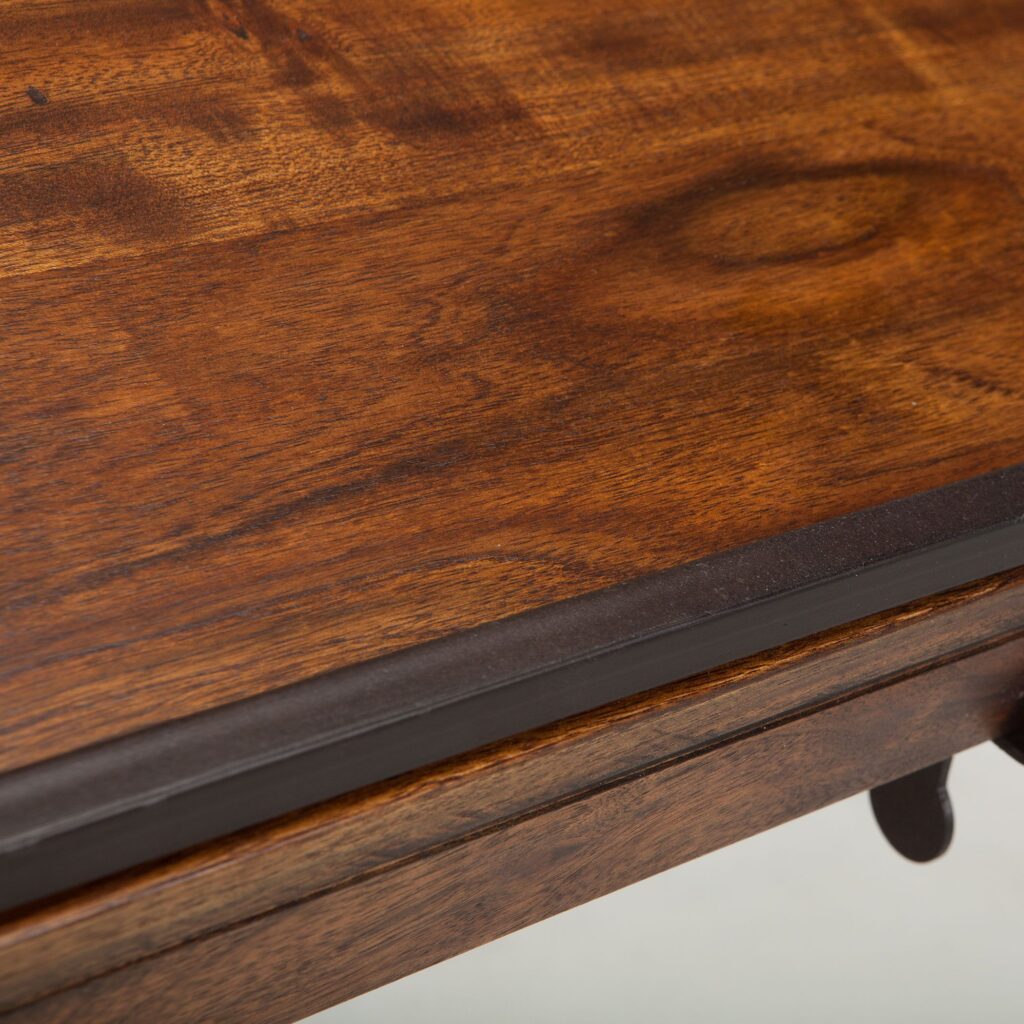
Having understood the key aspects to consider while selecting a drafting table, let’s examine some of the best choices available in the market. From vintage-inspired designs to portable and modern innovations, there’s a drafting table to suit every preference.
Vintage-Inspired Drafting Tables
For those who appreciate the charm and elegance of classic designs, a vintage drafting table offers timeless appeal. These tables often feature wooden frames, such as maple hard wood frame, birch, and oak, adding a touch of warmth and sophistication to your workspace. One popular feature is the solid maple apron, which provides additional support and durability.
Vintage-inspired drafting tables not only provide a stylish addition to your workspace but also offer the practical features needed for drafting and drawing. With their combination of timeless design and modern functionality, these art table drafting tables are an excellent choice for those looking to infuse their workspace with a touch of classic elegance.
Custom Drafting Tables
Creating a custom drafting table presents a unique opportunity to tailor every aspect of this essential piece of furniture to your specific needs and preferences. One of the key advantages of going custom is the ability to design for ergonomics. Unlike off-the-shelf options, a custom table can be adjusted to the perfect height and angle for your comfort, reducing the risk of strain during long hours of work. This is particularly important for architects, artists, and designers who spend a considerable amount of time at their drafting tables.
Another significant advantage is the ability to integrate personalized features and storage solutions. Whether you need specialized compartments for tools and materials, extra drawers for organization, or a specific surface area to accommodate large projects, a custom table can be designed with these in mind. Furthermore, the choice of materials and finishes allows for a level of aesthetic customization that can complement the style of your workspace or home.
A custom drafting table doesn’t just serve as a functional tool; it can also be a centerpiece that reflects your personal style and passion for your craft.
Modern and Innovative Drafting Tables
For those in search of cutting-edge features and sleek designs, modern and innovative drafting tables cater to contemporary workspaces. These tables often incorporate:
- Adjustable height and tilt features for ergonomic comfort
- Built-in storage options for organization
- A stylish aesthetic to blend seamlessly with modern decor
Drafting Table Accessories and Supplies
A well-equipped drafting table is a requisite for productive and accurate work. In addition to selecting the perfect table, it’s crucial to consider the various accessories and supplies that will enhance your drafting experience. From lighting solutions and storage options to essential drafting tools, the right accessories can make all the difference in your productivity and comfort.
In the following subsections, we’ll delve into the different types of drafting table accessories and supplies, including:
- Lighting solutions to illuminate your workspace
- Storage and organization options to keep your tools and materials in order
- Essential drafting tools for precise and accurate work
Lighting Solutions
Proper lighting is essential for any drafting table setup, as it ensures clear and consistent illumination on the work surface, improving visibility and accuracy. Additionally, the right lighting can help minimize eye strain and fatigue, allowing for extended work periods. Adjustable lamps and lighting systems designed specifically for drafting tables offer the flexibility and precision needed to create the perfect lighting conditions for your work.
By investing in a high-quality lighting solution, you can ensure your light table is well-lit and conducive to accurate and efficient work.
Storage and Organization
Maintaining orderliness of your drafting tools and materials is vital for smooth workflow. Built-in storage compartments, shelves, and drawers can help keep your drafting table clutter-free and ensure that your tools are always within reach. Optimal storage solutions for drafting tables include:
- Drawers for files
- Plastic organizers that attach to the table
- Tabletop art trays
- Tables with integrated storage shelves or drawers
By incorporating storage and organization solutions into your drafting table setup, you can not only create a more efficient workspace but also prolong the life of your drafting tools and materials. A well-organized drafting table allows you to:
- Focus on your work without the distraction of a cluttered work surface
- Easily find and access the tools and materials you need
- Keep your drafting tools and materials in good condition, preventing damage or loss
Drafting Tools and Equipment
Outfitting your drafting table with necessary tools is important for exact and meticulous work. Some of the necessary drafting tools for professionals include:
- Drafting-weight paper
- A ruler
- Compass
- Protractor
- Pencils
- Artist-quality erasers
- A drawing board
- T-square
- Scale ruler
- Set square and triangles
- Protractor
- Compass
- Template
By investing in high-quality drafting tools and equipment, you can ensure that your work is accurate, precise, and professional. With the right tools at your disposal, your drafting table becomes a versatile workspace, ready to tackle any project that comes your way.
Caring for Your Drafting Table
Proper care and maintenance are necessary to guarantee your drafting table’s durability. This includes regular cleaning, surface protection, and making necessary adjustments to maintain its stability and functionality. In the following subsections, we’ll provide tips and recommendations on cleaning and maintenance, protecting the surface, and adjustments and repairs, ensuring your drafting table remains in optimal condition for years to come.
Taking the time to care for your drafting table not only preserves its appearance and functionality but also contributes to a more efficient and enjoyable workspace. By following the guidelines and recommendations in this guide, you can ensure that your drafting table remains a valuable asset in your creative endeavors.
Cleaning and Maintenance
Frequent cleaning is important to maintain your drafting table’s aesthetics and functionality. The appropriate cleaning products and methods vary depending on the surface material of your table. For wood drafting tables, mild cleansers like soap and water are recommended, while for glass surfaces, a streak-free glass cleaner or diluted vinegar solution can be used. In addition, it’s essential to regularly clean your drafting supplies, such as pencils, markers, stencils, and rulers, to remove any residue.
By keeping your drafting table and supplies clean, you can prevent damage to the table surface and ensure a more efficient and enjoyable work experience. Regular maintenance also contributes to the longevity of your drafting table, allowing it to remain a valuable asset in your workspace for years to come.
Protecting the Surface
Using protective covers, mats, or tempered safety glass tops is necessary to prevent your drafting table’s surface from scratches and damage. A craft mat or a vinyl surface protector can provide a barrier between your work and the table, preventing any damage to the surface. Additionally, cork or felt pads can be placed under decorative pieces to protect the table from scratches.
By taking steps to protect your drafting table’s surface, you can prolong its life and maintain its appearance. A well-cared-for drafting table not only looks better but also provides a more enjoyable and efficient work experience, allowing you to focus on your creative projects without worrying about damaging your table.
Adjustments and Repairs
Regular inspection of your drafting table’s adjustable parts and carrying out needed repairs is vital for its stability and functionality. Common issues encountered when adjusting a drafting table include:
- Lack of adjustability
- Assembly difficulties
- Stability concerns
- Inadequate storage
- Difficulty in changing the board inclination
- Limited workspace
- Insufficient durability for heavy use
By addressing these issues and making necessary adjustments, you can ensure that your drafting table remains a reliable and efficient workspace, allowing your materials to lay flat.
In addition to making adjustments and repairs, it’s essential to have the right art supplies on hand for performing maintenance tasks. Essentials include:
- Drafting-weight paper
- A ruler
- Compass
- Protractor
- Pencils
- Artist-quality erasers
- Dividers
- Drawing boards
- Scales
- Triangles
- T-squares
By keeping your drafting table well-maintained and making necessary repairs, you can ensure its longevity and continued functionality.
Summary
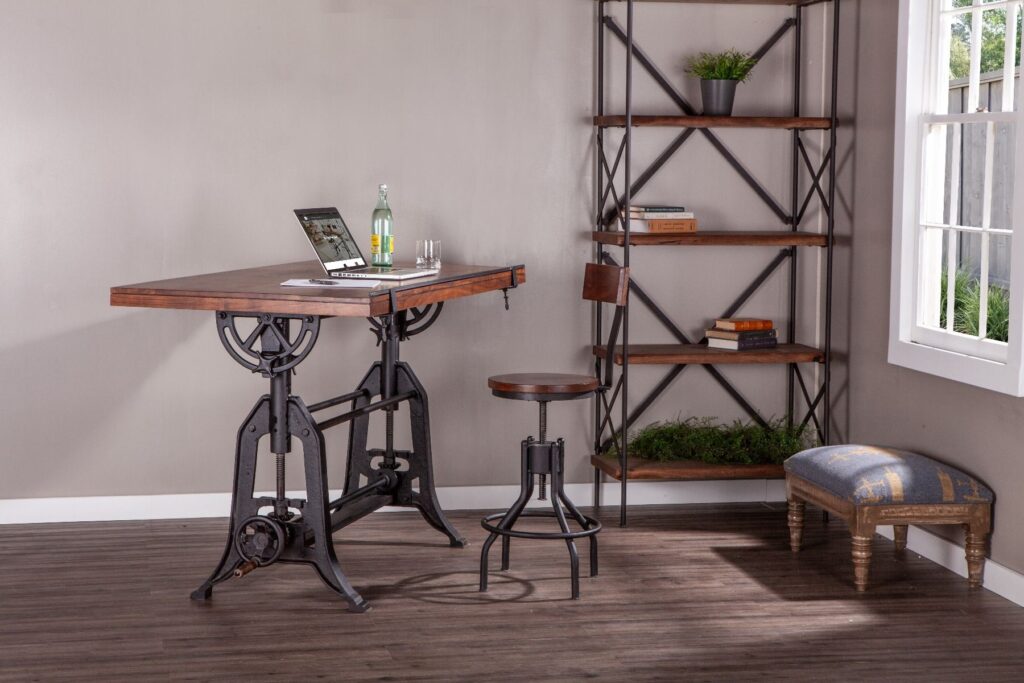
In conclusion, finding the perfect drafting table involves considering various factors, such as size, functionality, style, and accessories. By carefully evaluating your workspace and needs, you can choose a drafting table that not only enhances your work experience but also serves as an inspiring centerpiece in your creative space. With our comprehensive guide and selection of top-rated drafting tables, you’re now equipped with the knowledge and resources needed to make an informed decision and find the perfect drafting table for your unique requirements.
Frequently Asked Questions
Are drafting tables worth it?
Overall, drafting tables provide a lot of versatile options for home office equipment and ergonomically friendly workspaces. With sturdy, high-quality options available, it can be worth investing in a drafting table. Wood drafting tables are typically the best.
What are drafting tables used for?
Drafting tables provide a stable platform for engineering, sketching and drawing projects, with adjustable angles and heights to suit the user. They are versatile tools that can be used in a variety of creative activities.
Do people use drafting tables anymore?
Drafting tables have been a cornerstone of the design industry, and although computers are now widely used for architectural drawing and drafting, many architects still prefer to work by hand on these classic tables.
What is the table on a drawing called?
A drawing board, also known as a drafting table or architect’s table, is used for drawing, writing, sketching, reading large documents, and drafting precise technical illustrations.
Can I convert my existing desk into a drafting table?
It is possible to convert a regular desk into a makeshift drafting table, but it may lack features and ergonomic adjustability that a specialized drafting table offers.
Where can I find or customize a drafting table in Colorado Springs?
CO Lumber & Real Wood Furniture is a furniture store in Colorado Springs that offers a selection of drafting tables, as well as the ability to custom-build your own by working with our in-house wood shop.

